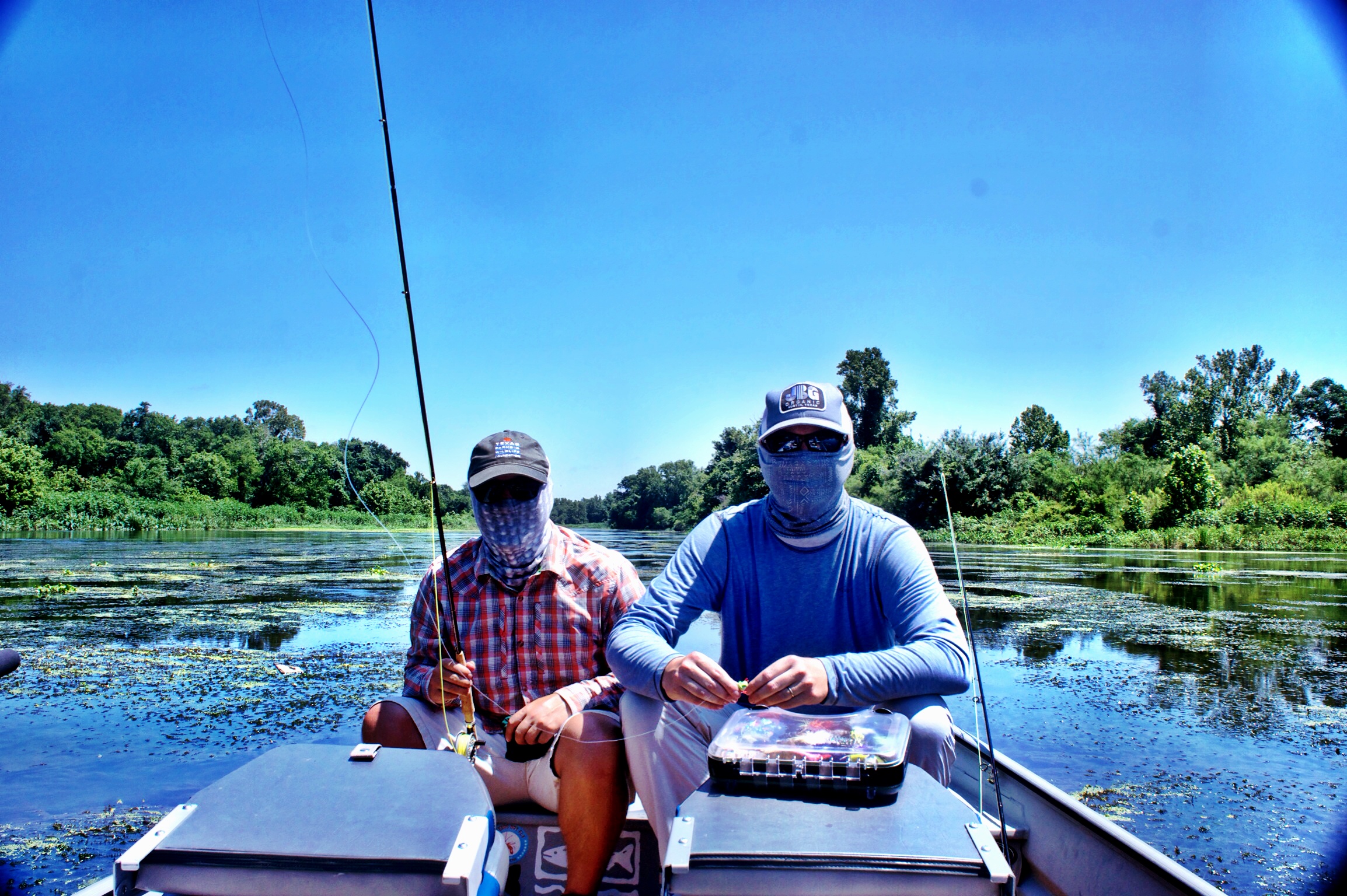Jet Sled version 2 second edition
how to park a let sled on the river
So here it is. I’m actually glad my laziness got the better of me as I’ll be able to do this in one sitting versus boring you all to tears with each individual step. I assumed this would take much longer than it did.
First picture of my new boat. About 30 seconds later my wife was informed of our new purchase.
After a bunch of research I decided on a SeaArk 1652 MVT (tunneled hull version). 16’ seemed about the right amount of boat, length wise and the wider the better. The decision to go with SeaArk was made after talking to several smaller boat builders in the Midwest, as they all seemed to, at some point in the conversation compare their boats to SeaArks in build, materials, etc. Alvin and JD had already made a couple trips to Currant River Marine (CRM) and under their advice I called Freddy to see what he had available. Long story short I was soon on my way to Currant River Marine in Doniphan, MO with my engine in the back of the Xterra. After a 16 hour drive they hung the engine, we ran the Currant River for a few minutes, and I signed some paperwork. By 5pm I was checked in to a cheap hotel ready to get a zero dark thirty start for the 16 hours back to Austin.
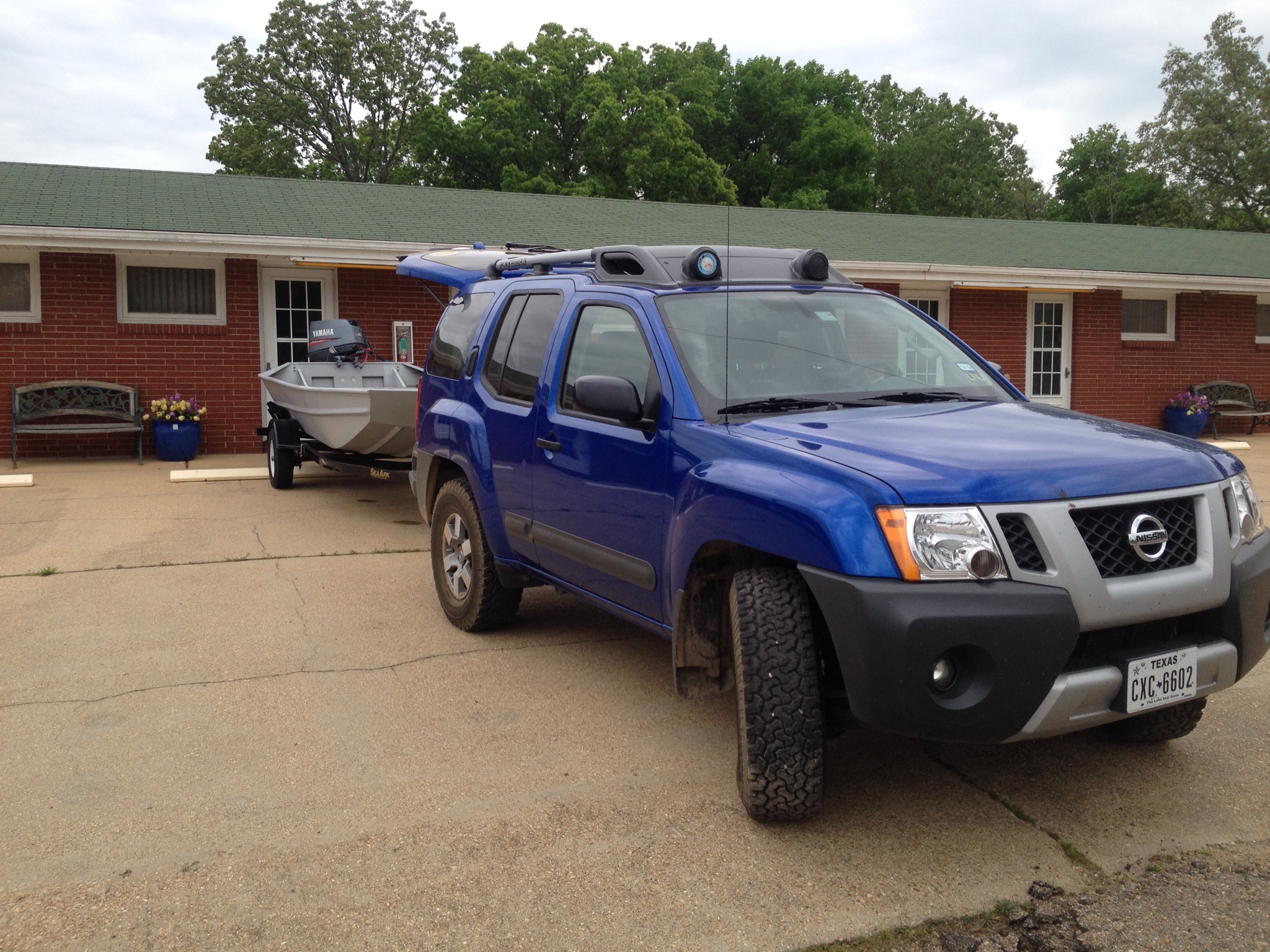
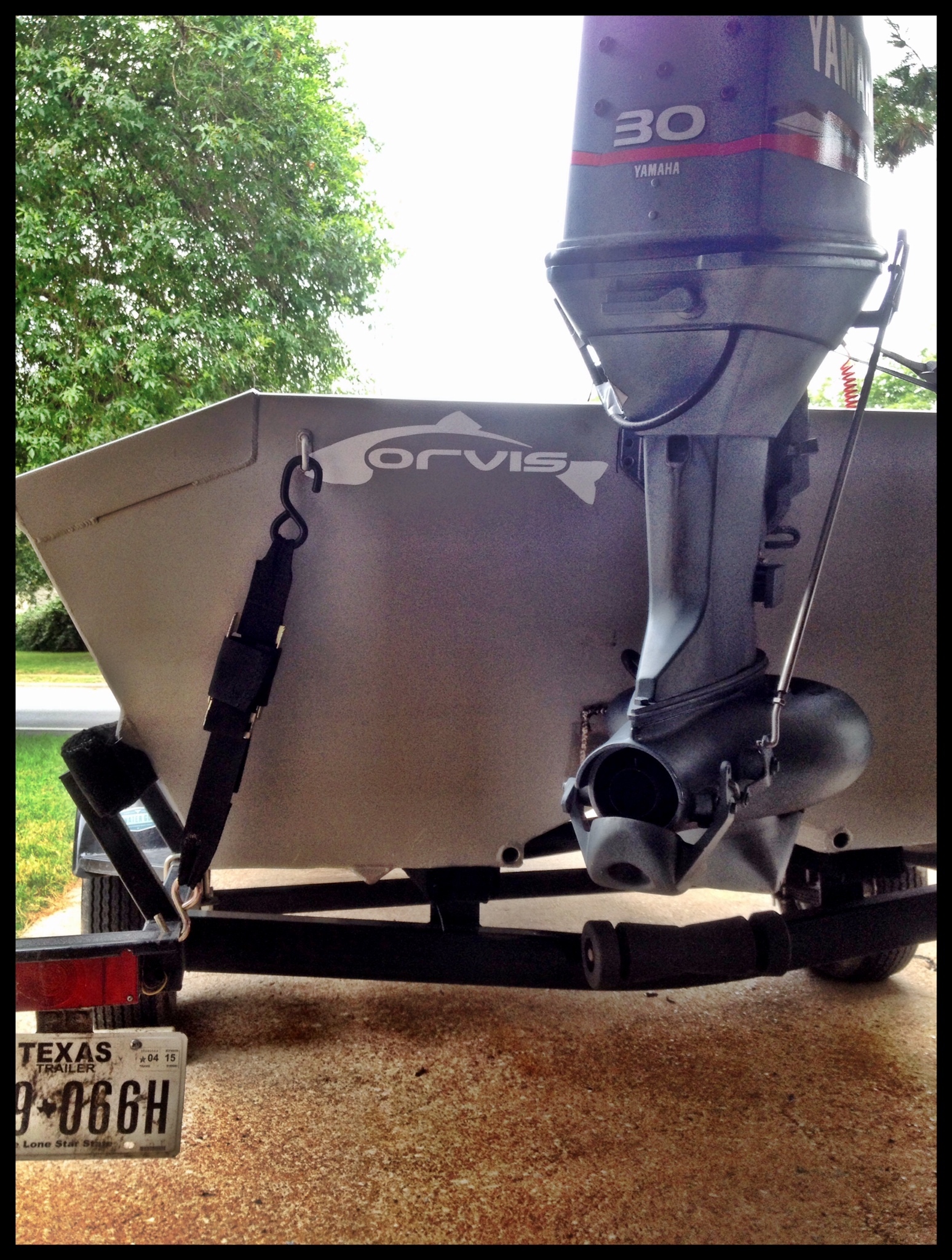
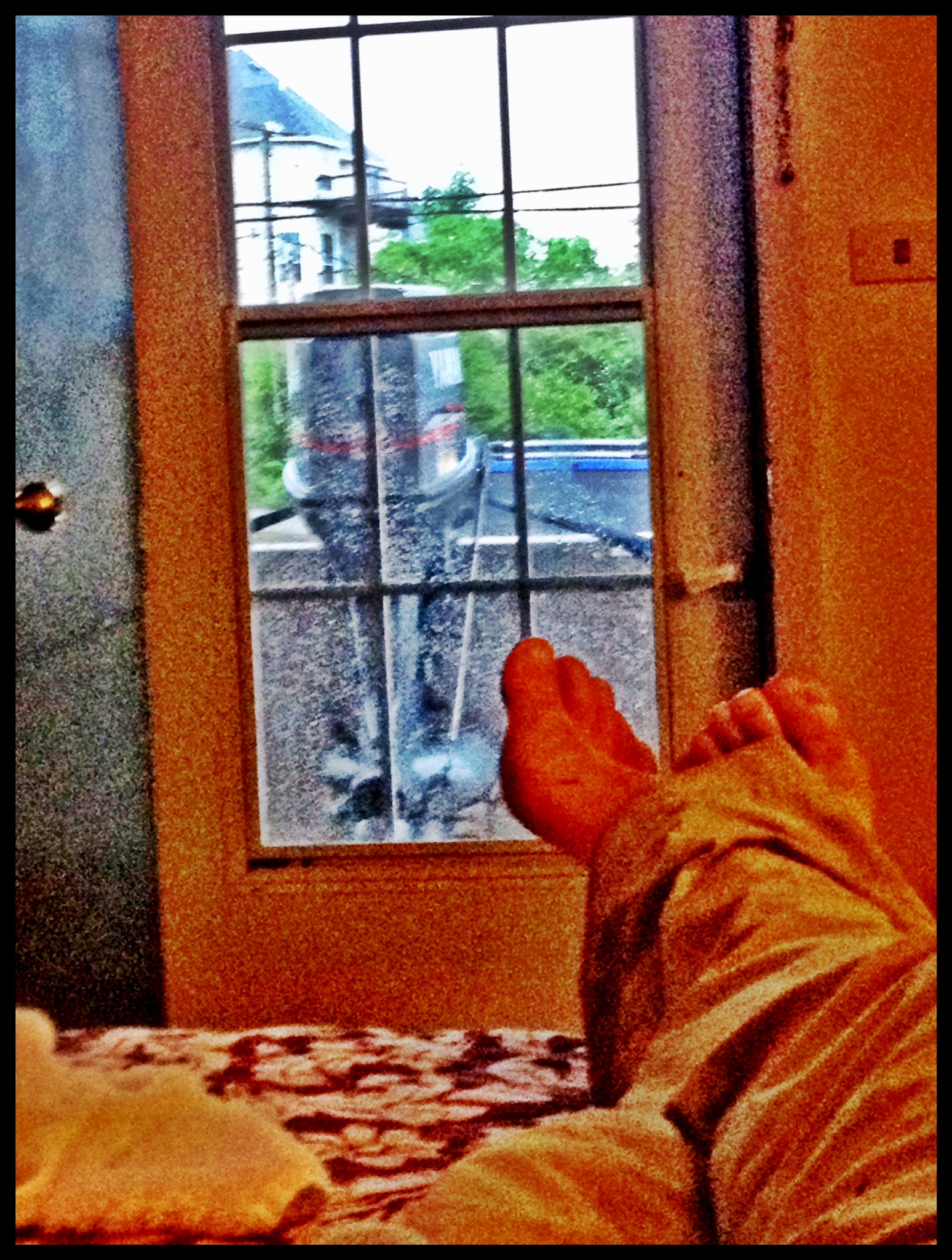
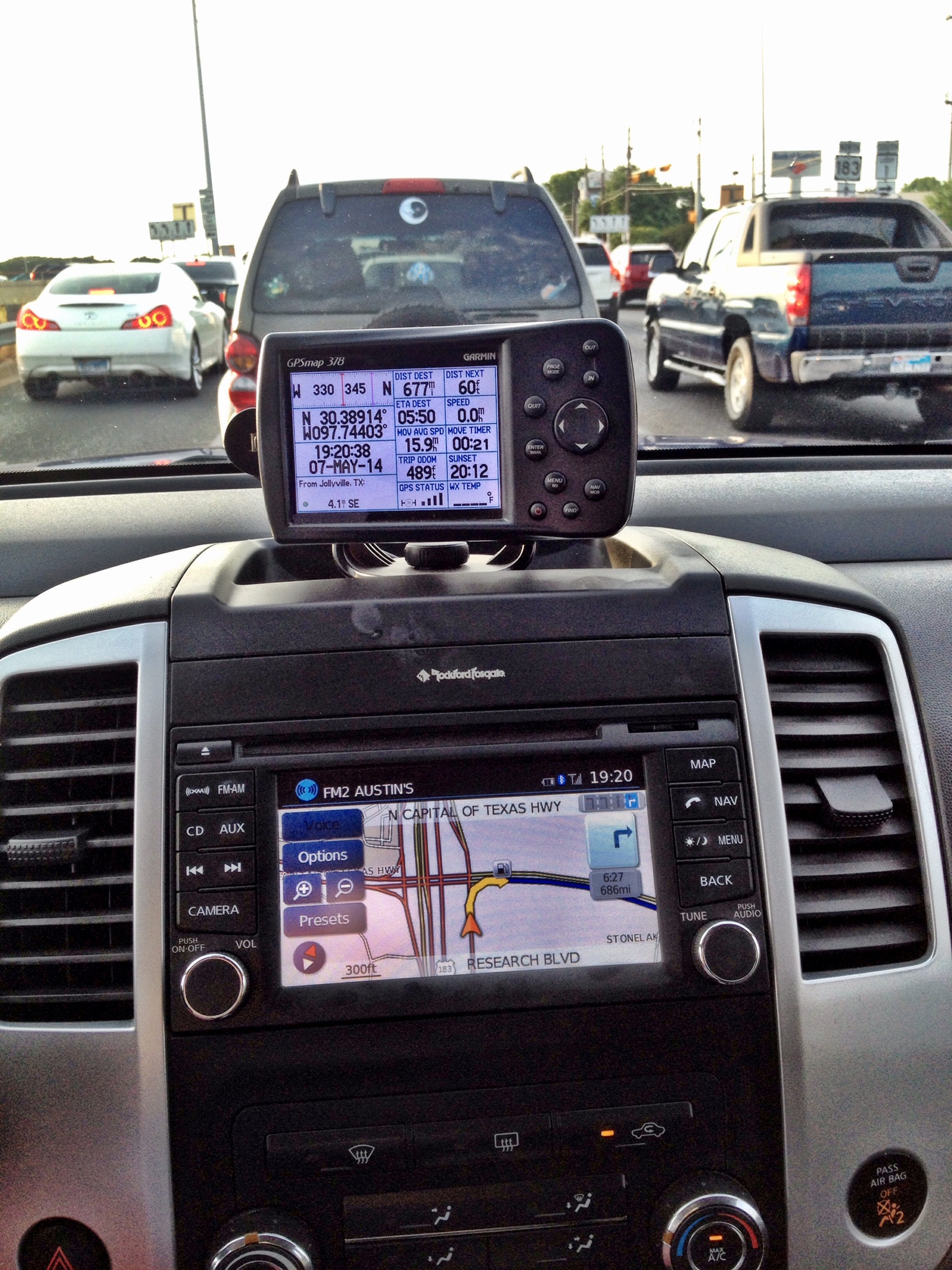
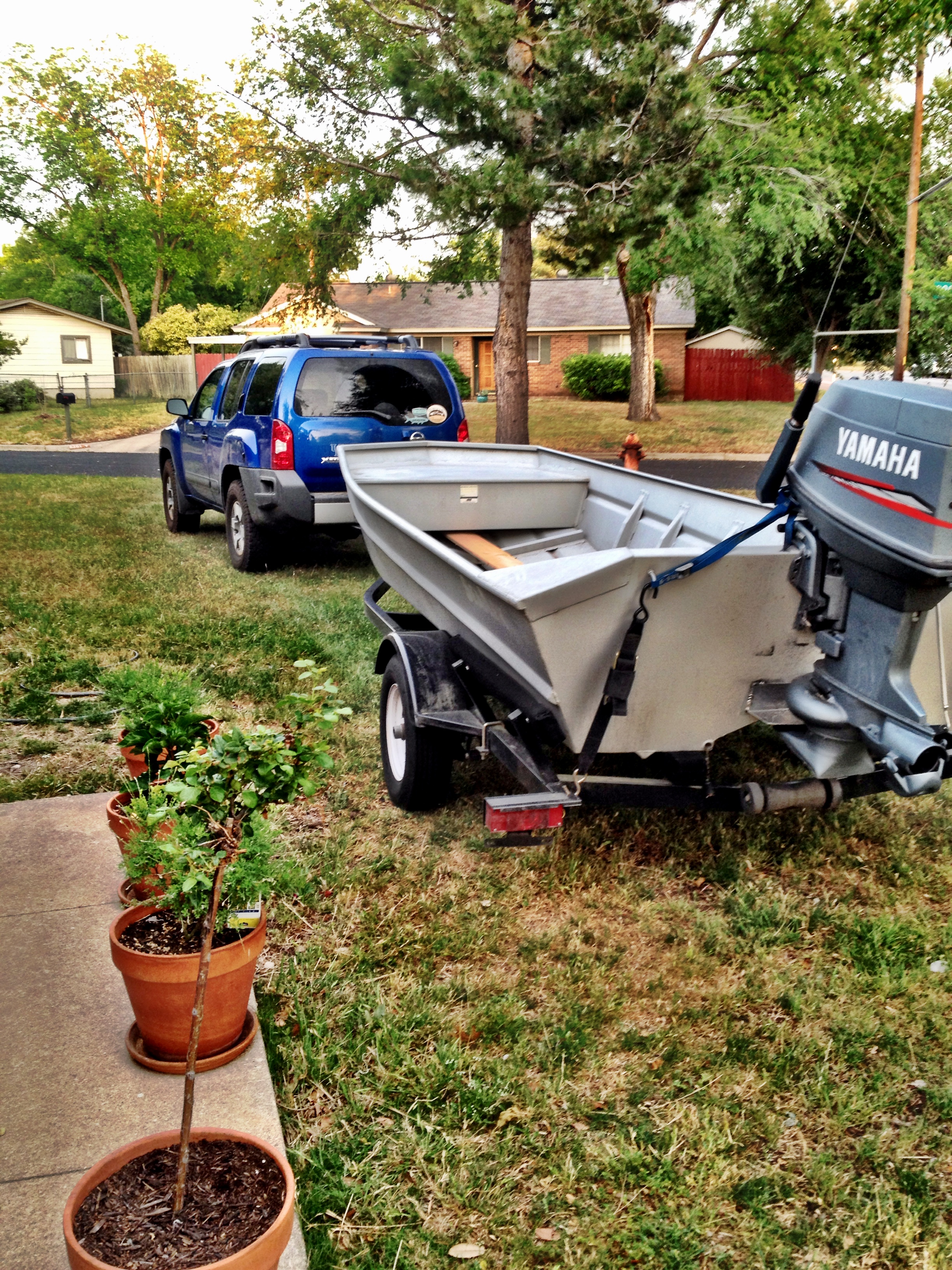
Freddy and the gang were worth every minute of the drive and their knowledge of lower-unit-less engines and boats is beyond awesome. I look forward to my return for a new engine.
Like I said in the previous post, I was going to do the exact same thing to this boat that I had done to the blue one. The SeaArk had a slight V in the Hull and I decided that needed to be addressed first. I had 4”x 4” 90 degree angle aluminium welded into the ribs to create a flat surface to build the flooring on. The flooring was Cedar planks that I sanded, epoxied, sanded, epoxied, sanded, epoxied and then sanded one more time with a final coat of spar varnish for the UV protection. I love wooden boats. My grandfather used to build them. I couldn’t not have the wood floors again, however, they are a huge pain in the ass to fit. I’m a huge fan of brute force and ignorance and in my diving days solved many problems with the idea that if a hammer wasn’t working a bigger one would. Fortunately, I was able to use the same tools my grandfather had used in his boat building; unfortunately his knowledge and experience did not magically pass through the tools as I had hoped it would. He died many years ago and I thought of him a lot while using them mostly during my many moments of frustration in not being able to beat the wood into submission with a larger hammer. The floors look great, however I can see every moment of frustration when my patience (or lack thereof) got the better of me. Guests don’t seem to mind.
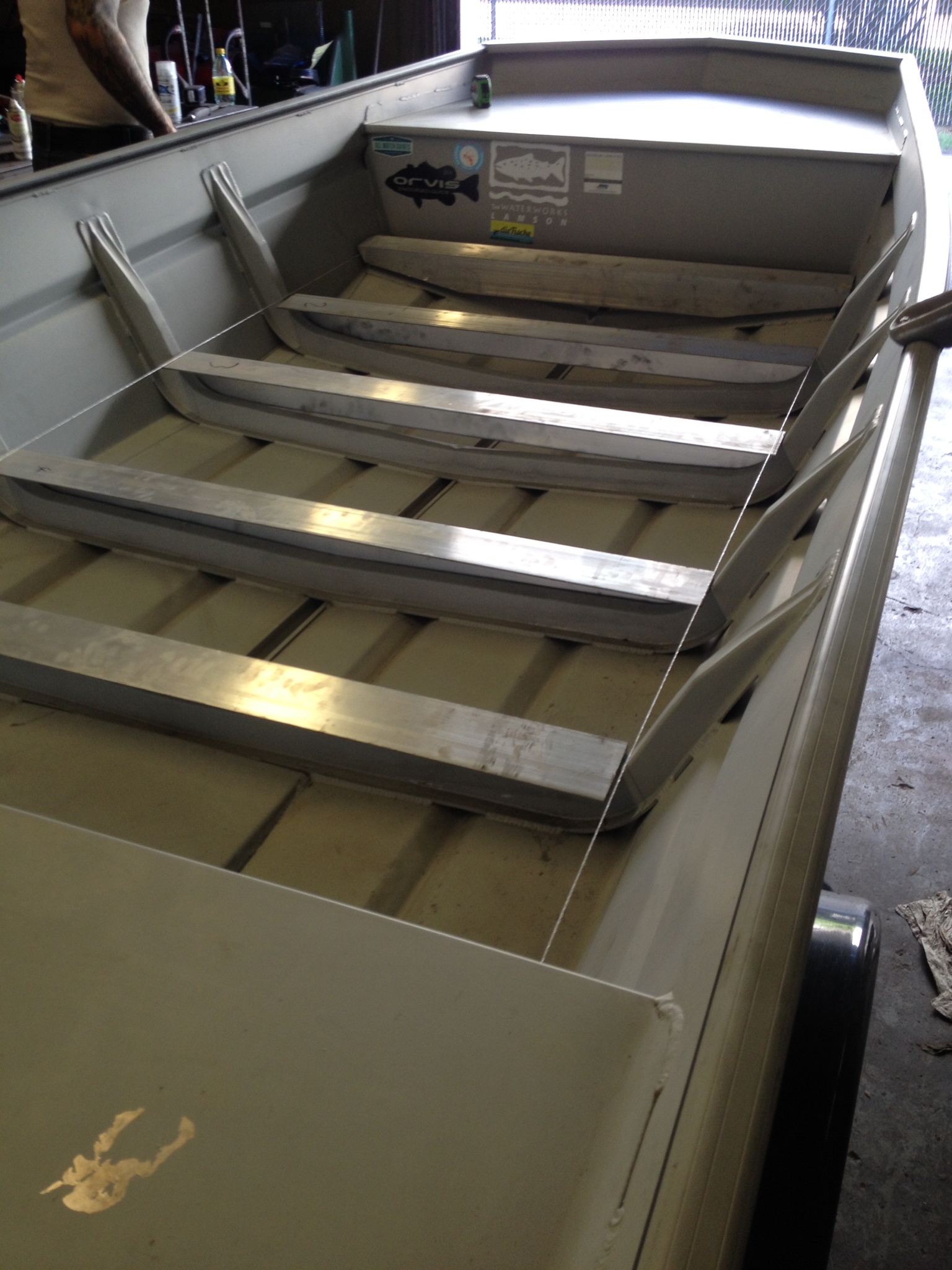
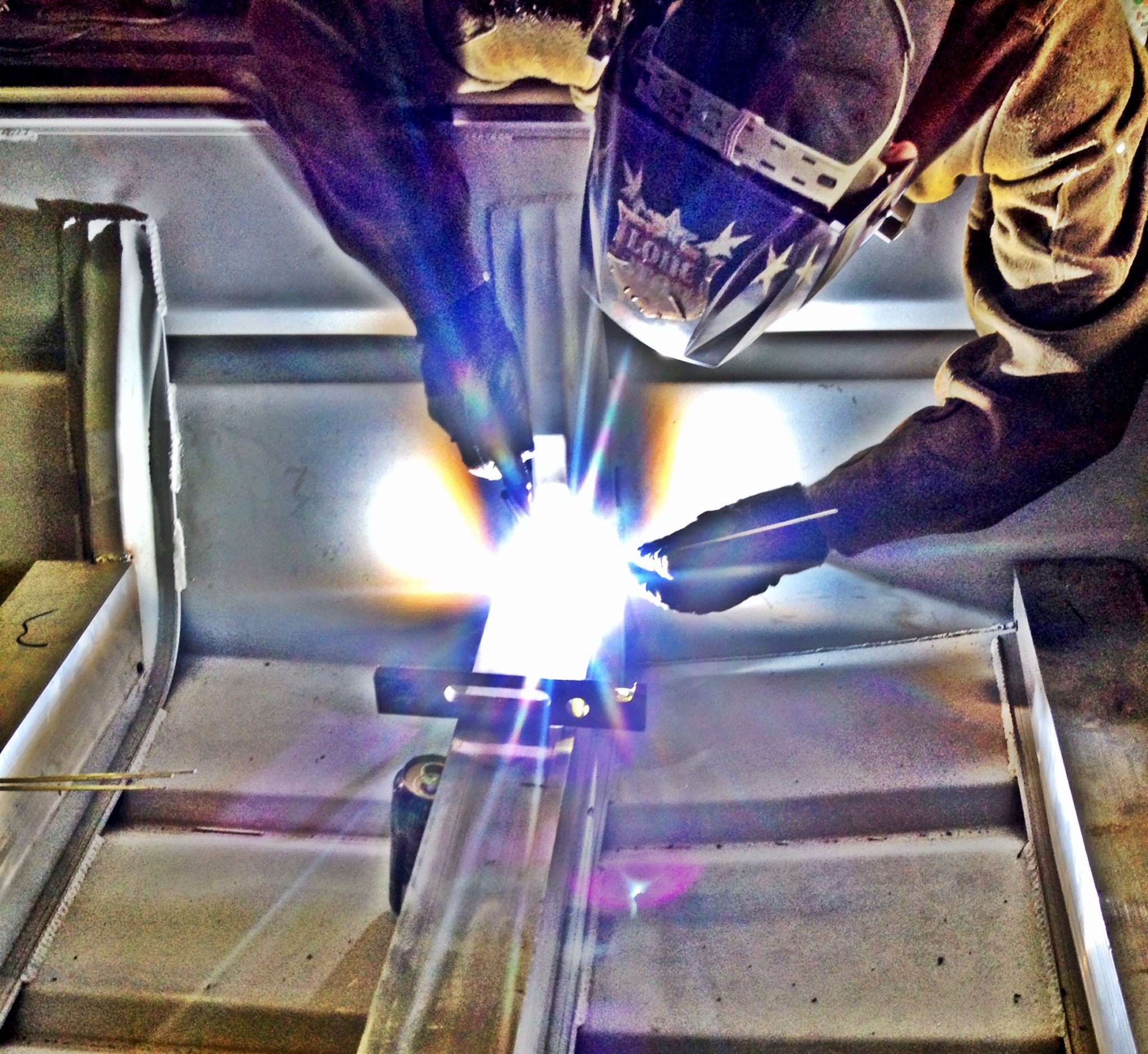
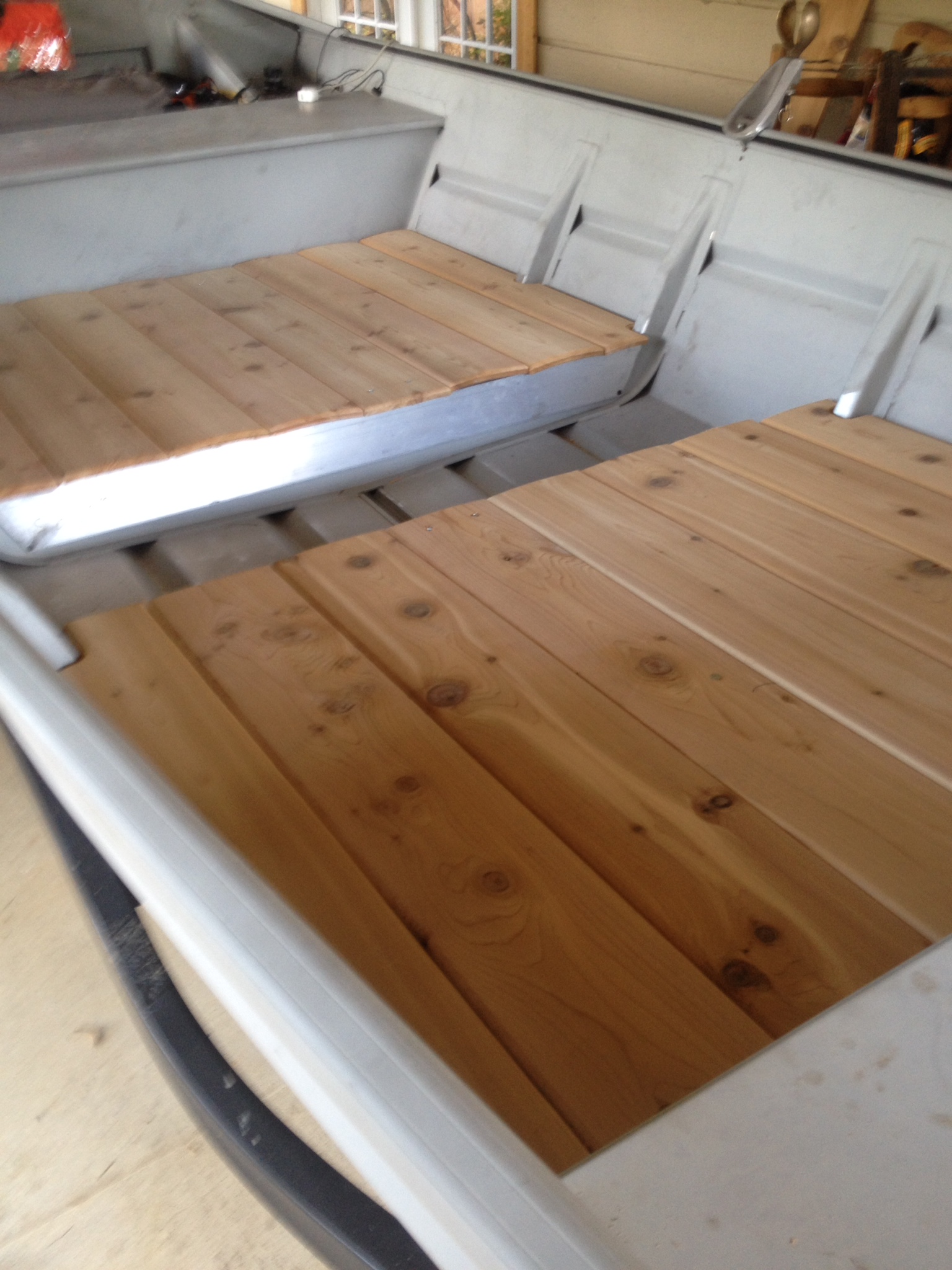
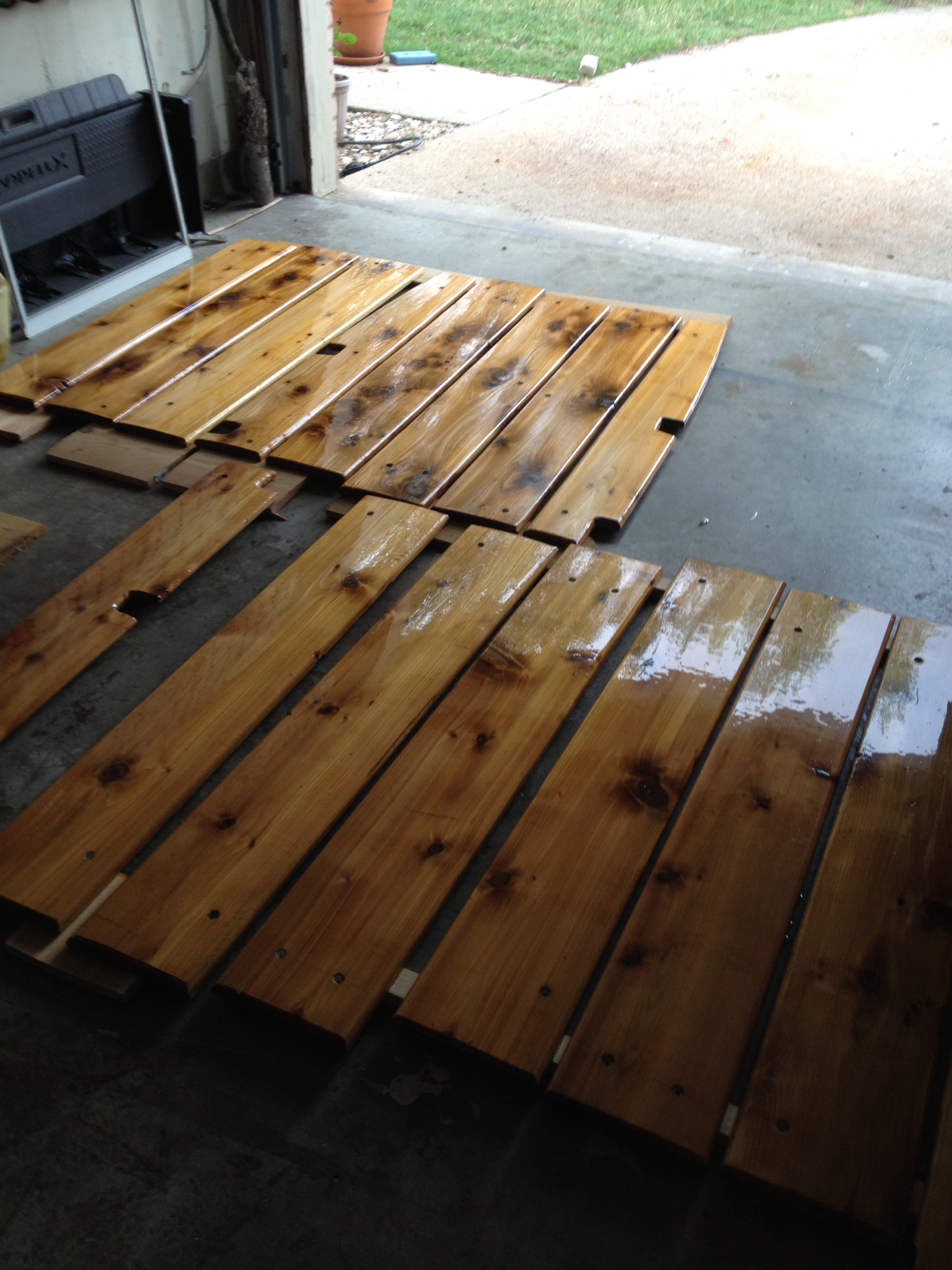
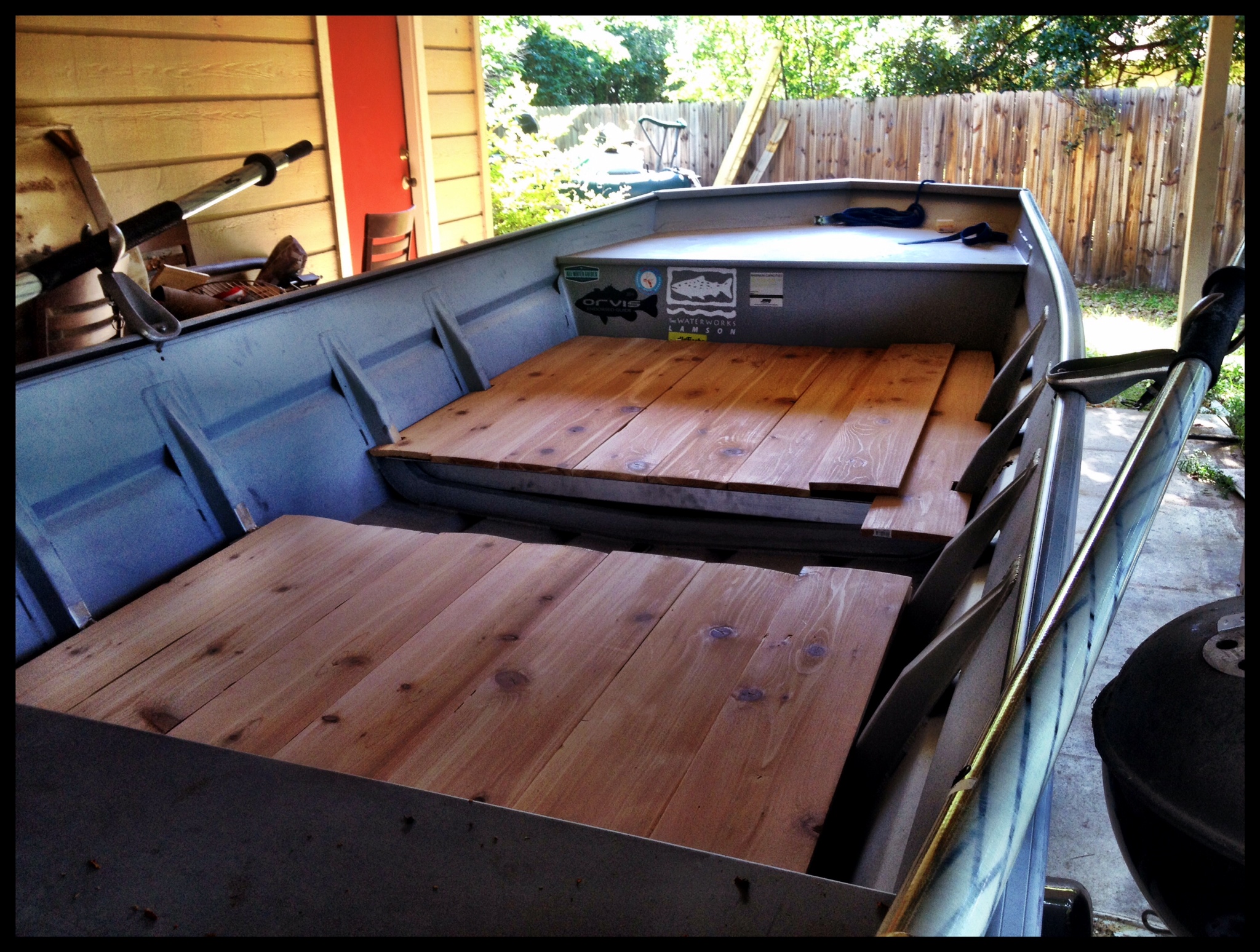
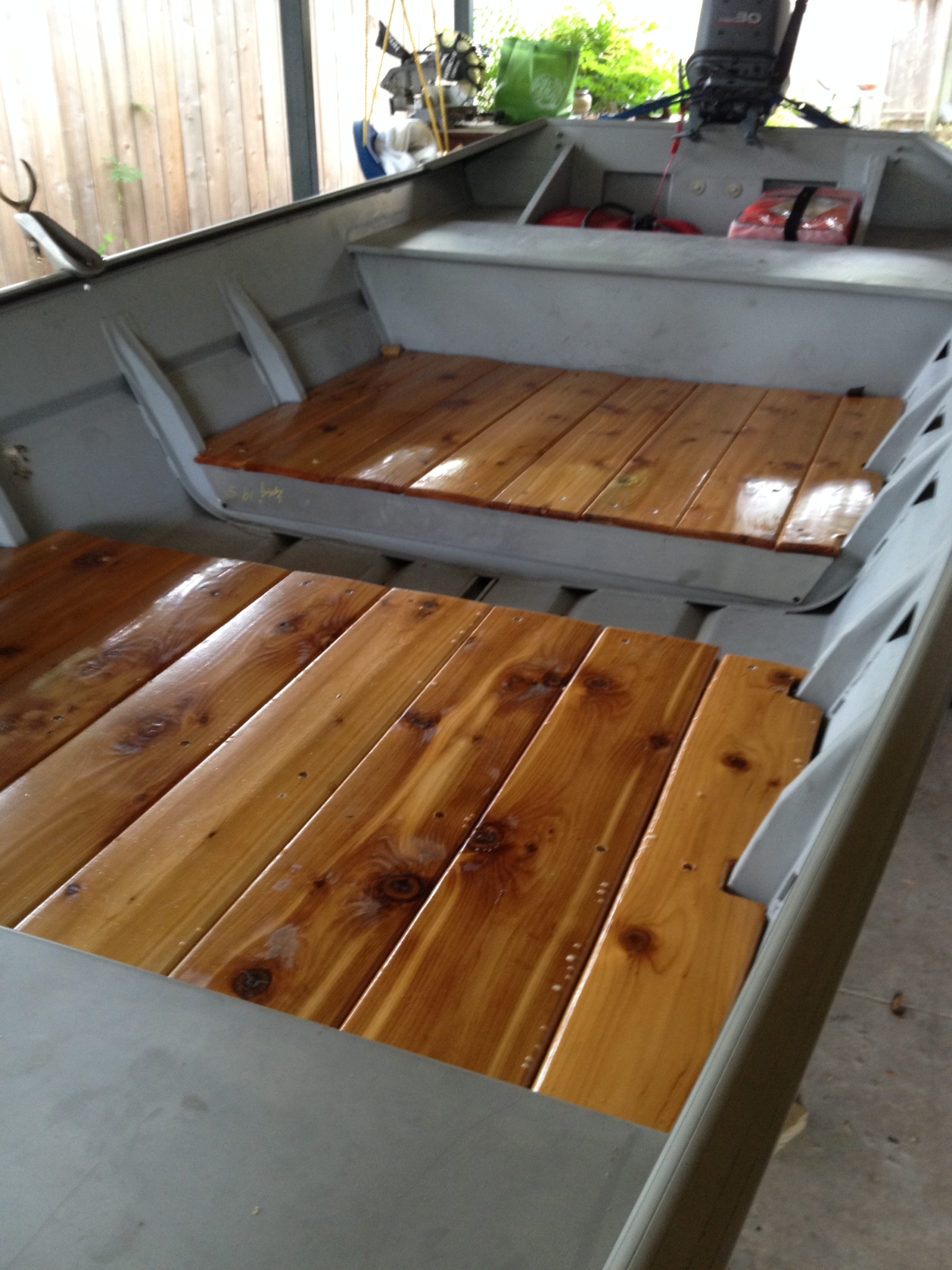
Supervision a year later...
Once the side pieces were cut and fitted to the ribs of the boat the rest went pretty quickly. I also can’t help but to think of my daughter, Poppy, who supervised the last boat, she was only a few months old and was pretty easy to occupy. She’s now almost 2 and has ZERO ability to sit and keep my company.
So that’s the floors. I was, at first, going to do lean bars and knee braces however after the first couple trips I’ve found out they aren’t really needed. It’s my opinion that maybe they create a false since of security for the anglers and without them my clients seem to have a better awareness of themselves and their movements while in the boat as long as I communicate my intentions while on the oars which is better for a lot of reasons. Speaking of the oars, I also didn’t have to create the “frame” like I had before. Oar locks u-bolt directly to the gunwales, which I need to move about a foot forward (boat forward) to give the front guy a little more room.
I, of course, have a laundry list of things to do still with rod holders being the first and some sea deck type stuff for the front casting platform (it gets hot) but since the boat was new there was no need to paint and do all that other nonsense that kept me so busy on the last project. Having the blue boat in my past made doing this boat so much easier, mainly because it was new…
Please contact me with any questions that I most likely did not answer. Alvin, JD and I would be more than happy to share what we’ve learned. We all run different rigs each having their own pros and cons.
Enjoy,
AWG
Dressing for Success: Or at least being able to stay on the water without suffering from heat exhaustion.
While Alvin and JD get to escape the summer heat of Texas, the rest of us will still run trips in the usual manner, however we’re going to be a little more inclined to do “half days” as opposed to the “full day trip” focusing on the early morning and late evenings.
During the next couple months we (as guides and fisherman) expect the brutal heat while on the water and do everything we can to prepare ourselves for it. Many of us guide and have “real jobs” on the side. Our preparation for the heat of the day not only keeps us fishing and guiding but allows us to not need a day off from our ‘day on the water’ to recuperate. Clients that show up dressed for the sun and heat in my experience catch more fish because they are able to fish hard from the first cast to last cast. Sun block, while an important part of the equation, can only go so far.
While on the water whether I’m fishing or guiding during the summer, you’ll find me covered from head to toe in clothing. Big straw hats, Buff sun masks, long sleeve shirts, pants and (yes, gloves). I’ve hyperlinked what I’m wearing in the picture. It seems to counter common sense that wearing so much clothing when its 105 will help keep you cool but it does. With the advances in outdoor clothing these technical garments create a barrier from the sun and “wick” moister (perspiration) in a way that you actually sweat less and what you do sweat evaporates in a more controlled manner. I’m not going to “cut and paste” a bunch of scientific evidence into this article as it is my experience that when I dress in this manner I’m a better guide for my clients and a better husband/father when my day on the water ends and the real work starts upon getting home.
Proper hydration isn’t something you can fix the day of. We all should be drinking water on a day-to-day basis. Bottled water won’t solve a dehydration or volume depletion problem the day of and while on the water, it can actually create serious complications (wearing my paramedic hat now) by flushing out electrolytes that well, are pretty damn important to being alive. As a medic this time of year we see a lot of people that don’t drink enough water on a day to day basis only to have it bite them in the ass after a full day in the sun. I’ve seen some scary cardiac rhythms associated with dehydration in “normal enough folks” that could have been avoided by just drinking a normal amount of water during the days before and wearing appropriate clothing. Shorts and t-shirts won’t cut it.
I think we all could easily drop a small fortune on gear without out a second thought. Personally it doesn’t take much to convince me that some shiny object to replace my perfectly good “older” shiny object is a must have for an upcoming trip (I’ve got a few coming). If you look at clothing as “gear” than it’s easy to justify a couple outfits for the elements. Rationally speaking it makes absolute sense to wear clothing that will keep you in the game longer whether it’s the trip of a lifetime or an afternoon on the Lower Colorado River with us.
See ya on the water!
AWG

